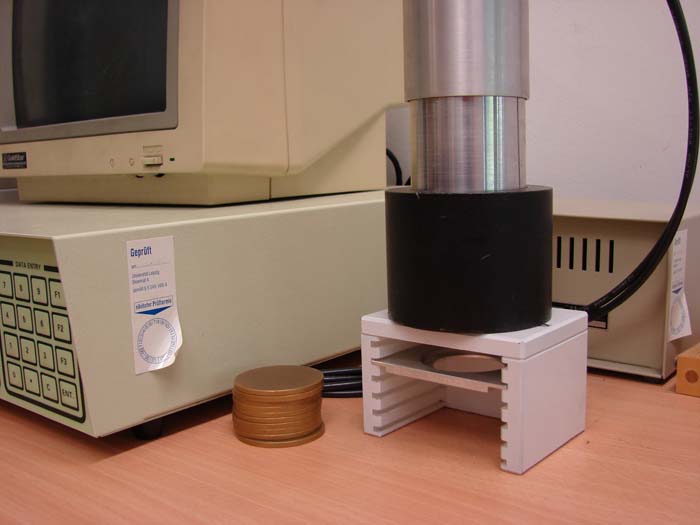ASTM D5812 Radon and Progeny Alpha Counting in Indoor Air
The ASTM D5812 standard is widely used by quality managers, compliance officers, R&D engineers, and procurement teams to ensure the accurate measurement of radon and progeny alpha activity levels in indoor air. This test method specifies a procedure for determining the concentration of radon daughter products (progeny) and their associated alpha activity in indoor air using alpha counting techniques.
The measurement of radon and its decay products is critical in assessing potential health risks from radon exposure, especially in enclosed spaces like homes and offices. This test helps to ensure compliance with various national and international standards aimed at minimizing the risk of lung cancer due to prolonged exposure to elevated levels of radon.
The procedure involves collecting air samples using a specialized device that captures airborne particles containing radon progeny. After collection, these samples are analyzed using an alpha spectrometer capable of detecting low-level alpha activity from short-lived radon daughters like polonium-218 and bismuth-214. The results provide valuable data on the concentration levels of these radioactive substances in indoor air.
The ASTM D5812 procedure ensures high accuracy and reliability through stringent quality control measures, including calibration checks and blank sample runs to account for background radiation. This ensures that the test results are precise and can be relied upon by stakeholders involved in maintaining safe environments.
By adhering to this standard, facilities can demonstrate their commitment to occupant safety while also complying with regulatory requirements set forth by bodies such as the EPA (Environmental Protection Agency) and WHO (World Health Organization), which recommend keeping radon levels below certain thresholds for public health protection.
This testing method is particularly important in regions known for high natural background radiation or areas where buildings are constructed near uranium deposits. It plays a crucial role in identifying problem areas within structures before they become hazardous to occupants' health. Regular monitoring using ASTM D5812 helps maintain indoor air quality standards, thereby protecting public welfare.
Benefits
The implementation of ASTM D5812 radon and progeny alpha counting offers several significant advantages:
- Precision Measurement: The technique provides highly accurate measurements of radon daughter activity, enabling precise assessment of potential health risks.
- Compliance Assurance: By adhering to this standard, organizations can ensure they meet regulatory requirements and industry best practices regarding indoor air quality.
- Risk Management: Early detection allows for proactive mitigation strategies to reduce exposure levels to safe thresholds.
- Scientific Validation: Results are consistent with internationally recognized standards, enhancing trustworthiness in reported findings.
- Enhanced Safety: Continuous monitoring helps maintain a safer environment by identifying and addressing issues promptly.
In summary, ASTM D5812 radon and progeny alpha counting is essential for maintaining safe indoor air environments. Its benefits extend beyond mere compliance; it contributes to occupant health and well-being while fostering confidence in regulatory adherence.
Why Choose This Test
- Accurate Data: The ASTM D5812 procedure ensures precise measurements, providing reliable data for decision-making processes.
- Regulatory Compliance: By using this method, facilities can meet legal and organizational standards related to indoor air quality.
- Health Protection: Early detection of elevated radon levels allows for timely interventions to protect occupant health.
- Scientific Integrity: Results align with internationally recognized standards, ensuring scientific validity and credibility.
- Cost-Effective Solutions: Preventive measures based on accurate testing can save costs associated with more severe health issues later down the line.
The choice of ASTM D5812 radon and progeny alpha counting is driven by its ability to provide robust, reliable data while ensuring compliance and fostering a safer environment. This makes it an indispensable tool for quality managers looking to uphold high standards in their operations.
Use Cases and Application Examples
| Application Example | Description |
|---|---|
| New Construction Projects | Testing during the initial stages of building construction ensures compliance with local regulations and helps in designing safer indoor environments. |
| Retrofitting Existing Buildings | This test is crucial for identifying problem areas within structures, allowing for targeted improvements to reduce radon exposure risks. |
| Residential Housing Developments | Testing in residential properties ensures that homeowners receive safe living conditions and complies with housing standards. |
| Office Buildings and Commercial Spaces | Maintaining indoor air quality is vital for employee health, productivity, and overall well-being in these settings. |
| Schools and Universities | Educational institutions must prioritize the safety of students and staff; regular testing ensures compliance with health and safety regulations. |
| Healthcare Facilities | Testing in hospitals and clinics is critical for maintaining a safe environment where patients and visitors are protected from potential hazards. |
The use cases for ASTM D5812 radon and progeny alpha counting extend across various sectors, making it an essential tool for ensuring indoor air quality in both residential and commercial settings. Its versatility allows it to be applied effectively in diverse environments where radon exposure needs to be controlled.





